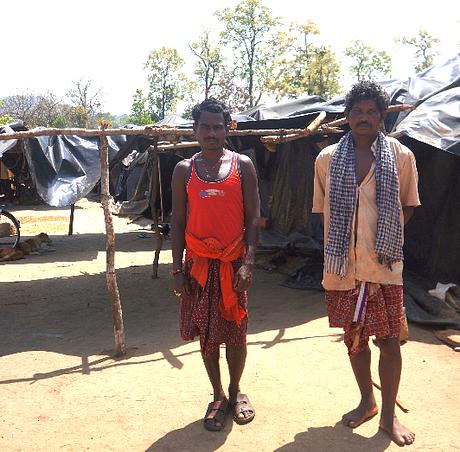Survival International condemns campaign to “protect half the planet”

Survival has written to Avaaz to condemn its new campaign to protect half the planet. If enacted, the plan will cause catastrophic harm to millions of people:
- It poses a serious threat to Tribal and Indigenous peoples. Creating Protected Areas on land inhabited by Indigenous Peoples and local communities repeatedly leads to their expulsion and persecution. The vast majority of Protected Areas in Africa and Asia, for example, have resulted in the eviction of Indigenous Peoples or other local communities. Pushing for more Protected Areas will mean more land theft, killings, torture and abuse.
- It will lead to a huge land grab. The existing campaign to “protect” 30% of Earth by 2030 (“30x30”) will already be the biggest land grab in history. Indigenous Peoples affected by Protected Areas are strenuously objecting to it.
- It will endanger the lives of millions of people. Avaaz’s campaign proposes a dangerous and diversionary ‘solution’ to biodiversity loss with no safeguards for Indigenous rights. The conservation industry has been promising to recognize Indigenous rights for decades (for example in the Durban Accord in 2003, in CBD Article 8j, and in the policies of conservation organisations like WWF) but has utterly failed to do so. There is no reason to expect things to be different now. Avaaz’s push to protect half the earth will directly endanger the lands, livelihoods and safety of millions of Indigenous and Local People.
- It reinforces the false idea that people and nature are separate. Calls for ‘protection’ of 50% of the Earth reinforce the false narrative that people and nature are separate, and that nature must be protected from people: the belief at the very heart of fortress conservation. Tribal and Indigenous Peoples know the opposite is true: their lands are not “wildernesses” but landscapes they have shaped and managed.
- It will intensify outsiders’ control of Indigenous lands. The vast majority of Protected Areas in Asia and Africa are government-run – almost none are run by Indigenous Peoples and local communities. They have been the cause of countless human rights abuses. The Avaaz campaign is likely to make this worse.
- It’s an attack on Indigenous autonomy. Decision-making about, and funding of, Protected Areas has always been in the hands of those with power – governments and hugely wealthy conservation organizations who are heavily funded and influenced by business interests. Calling for more such areas increases their power at the expense of the owners of the land.
- It undercuts Indigenous calls to scrap “30x30.” The campaign undermines the demand from many Indigenous Peoples, including those speaking at the Our Land Our Nature Congress, for the existing “30x30” target to be abandoned. The concerns about 30x30 are supported by the almost 250 organisations which have signed the joint statement to this effect. Avaaz’s campaign is a betrayal of the countless Indigenous People who have lost their lives, lands and means of survival in the name of conservation.
- It diverts attention from the best way to save biodiversity – to recognize Indigenous land ownership rights. By far the most effective and just way to fight biodiversity loss and climate change is to respect the rights of Indigenous Peoples to their lands. This fact is acknowledged in many scientific papers, policies and declarations including the recent Policy Brief by the UN Special Rapporteur on Human Rights and the Environment.
Besides these direct and disastrous consequences for Indigenous Peoples and local communities, the campaign to “protect” 30% or 50% of Earth will not help the fight against climate change:
- It will fail to halt environmental destruction and biodiversity loss. The model of creating Protected Areas has completely failed to halt environmental destruction and biodiversity loss. Of the 20 targets in the previous global action plan on biodiversity, (covering 2010-2020), the only one achieved was to increase the area of Earth designated as protected to 17%. Yet the conservation industry itself states that biodiversity has declined ever faster during this same period, raising serious questions about any scientific basis for the 30% or 50% demand.
- It diverts attention from the real cause of global warming. Calls to protect 30% or 50% of the planet are a diversion from pressure for concrete action to stop burning of fossil fuels, over-exploitation of natural resources and over-consumption, particularly in the Global North. Many governments will sign up to these pledges as a way of appearing to take action without actually having to do anything to address the real causes of the climate crises and biodiversity loss – at the expense of Indigenous Peoples.
Sign up to the mailing list
Our amazing network of supporters and activists have played a pivotal role in everything we’ve achieved over the past 50 years. Sign up now for updates and actions.
